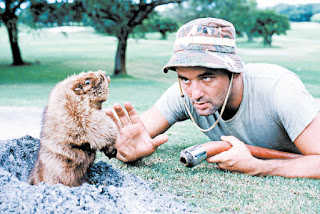The
Stanislaus River is a tributary of the San Joaquin River in north-central
California. It starts as three forks in the Sierra-Nevada Mountains. It
generally flows southwest through five counties of the agricultural San Joaquin
Valley to join the San Joaquin River south of Manteca. Measured to its furthest
headwaters, it is about 150 miles long.
 |
| Stanislaus River watershed - Ctsy Shannon1 |
It
is known for its swift rapids and scenic canyons in the upper reaches.
It is also heavily used for irrigation, hydroelectricity and domestic water supply.
Now
we have the dry textbook introduction out of the way, why blog about the
Stanislaus River, one of many rivers in California? My most recent novella, Millwright’s
Daughter, is mostly set along the Stanislaus River. Many may not
consider the story’s locale, based loosely on Oakdale and Knight’s Ferry, gold
rush territory, but the California gold rush does play a role in the
development of that region.
 |
| Stanislaus River at the Knight's Ferry bridge - Michael Nevins, US Army Corps Engineers |
The Stanislaus River was the destination of tens of
thousands of gold seekers. Many of them reached California by traveling over
the Sonora Pass which is near the headwaters of the Middle Fork of the
Stanislaus River.
 |
| Donnell's Dam on Middle Fork Stanislaus River - Ctsy Bodey Marcoccia |
Early
mining companies were formed to channel Stanislaus River water to the gold
diggings via elaborate canal and flume systems, which directly preceded the
irrigation districts formed by farmers who sought a greater degree of river
control.
 |
| Stanislaus River at_Big Dog Rapid near head of New Melones Lake ctsy Zachary Collier |
Like one of my characters, many miners and their families
eventually settled along the lower Stanislaus River. The reason? After the easy
placer gold had been found, more complex and expensive mining methods such as
hydraulic and dredging developed. Men found they must work as employees.
Although the wages were good in comparison to some other types of work, it did
not support the dreams of acquiring vast sums of wealth to take back home in
the east.
For many former gold-seekers who decided to stay and make
a home in California, they turned to what they knew best—the occupations they learned
before they came to California. The farms and ranches they established are now
part of the richest agricultural region in the United States. Others, such as
my millwright character, Joseph Wells, worked in support trades for the
agricultural industry.
 |
| Old Melones Dam built 1926, later submerged by the New Melones Dam |
Starting
in the early 1900s, many dams were built to store and divert water; these were
often paired with hydro-power systems, whose revenues covered the high cost of
the water projects. In the 1970s the construction of the federal New Melones
Dam incited major opposition from recreation and environmental groups, who
protested the loss of one of the last free-flowing stretches of the Stanislaus.
Although New Melones was eventually built, its completion is considered to have
marked the end of large dam building in the United States.
I
used to live in Stanislaus County, so the river that gave the county its name
is familiar to me. Many years ago – DECADES ago – I rafted several times on the
Stanislaus River. I’ve never done white water rafting. That is a little too
much excitement for me. However, I have rafted down the part below all the dams
just east of Oakdale as the river continues its course towards the San Joaquin
River. One early fall, my last rafting adventure, the dams were letting more
water through than normal. With the fast-moving water and eddies, we struggled
to keep our rafts going in the right direction and staying upright. I was glad
to reach our landing point so I could leave that adventure behind.
Instead,
my next adventure on the Stanislaus River is in the form of a novella titled Millwright’s
Daughter, with the setting loosely based on the early 1880's history of the region. For
the time being, you may find this story as part of the Under a Mulberry Moon
anthology. Enjoy!
You
may find the book description and purchase links for Under a Mulberry Moon by CLICKING HERE.












 Virginia City, Nevada
Virginia City, Nevada
